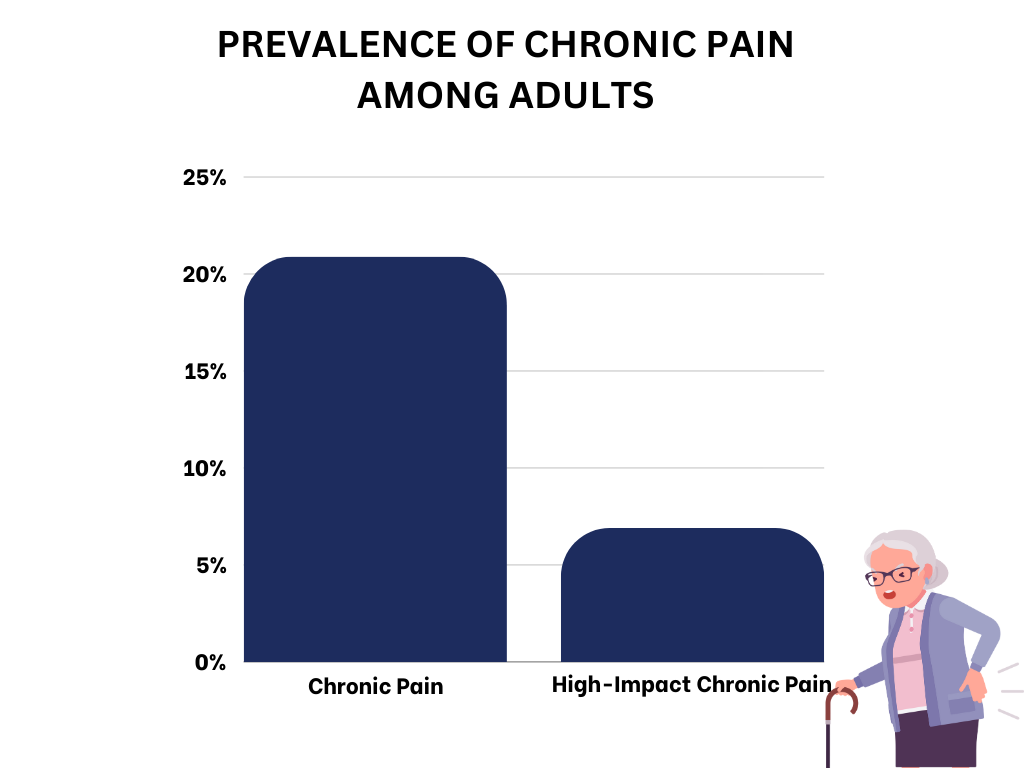Health
8 Ways to Manage and Prevent Chronic Pain in Seniors

Chronic pain, a debilitating condition affecting approximately 50 million adults in the United States, poses a formidable challenge to the well-being of the aging population. Proactive management strategies are imperative tools to enhance the quality of life for seniors dealing with persistent pain. The multifaceted nature of chronic pain necessitates a nuanced understanding, considering its potential to trigger adverse psychological effects, with depression emerging as a significant concern affecting seniors. Navigating the complexities of chronic pain is crucial.
Embracing proactive management strategies allows individuals, caregivers, and healthcare services to collectively enhance the quality of life for seniors navigating the complexities of chronic pain.
Exercise for Pain Management
Acknowledging the intricate relationship between physical and mental well-being, seniors engaged in physical activity report less pain, underscoring the pivotal role of exercise. Exploring specific exercises for seniors becomes crucial. Regular exercise reduces the risk of chronic pain conditions, with physical activity decreasing arthritis-related pain.
Participating in low-impact exercises, such as swimming or walking, has been linked to improved joint flexibility and reduced pain. Considering adult primary care services with exercise programs is worthwhile, as they can significantly contribute to overall health improvement.
Beyond physical activity, mind-body techniques like mindfulness meditation can result in a 27% reduction in perceived pain intensity for seniors. Progressive muscle relaxation has been shown to decrease pain perception in older adults.
Changing Diet for Better Health
Considering the influence of diet on inflammation and pain, Omega-3 fatty acids found in fish and nuts have anti-inflammatory properties, potentially reducing arthritis pain. A diet rich in antioxidants can help mitigate the oxidative stress and inflammation associated with chronic pain.
Incorporating assistive devices, such as canes and walkers, is pivotal. These not only reduce pain but also improve mobility, benefiting over 1 in 10 seniors with arthritis. Ergonomically designed furniture can alleviate chronic pain by promoting proper posture and reducing musculoskeletal strain.
A doctor’s Prescribed Medication for Management
Pain management is a significant aspect of senior healthcare, and for many older adults, medications play a crucial role in addressing chronic pain. Studies indicate that over half of seniors experiencing persistent pain rely on prescription medications, underscoring the widespread dependence on pharmacological interventions in this demographic.
Source: Center of Disease and Control
The collaborative effort between seniors and healthcare professionals aims to optimize pain management, enhance overall well-being, and promote a safe and fulfilling lifestyle for the aging population.
Better Sleep for Less Pain and Better Recovery
The intricate interplay between pain and sleep is well-documented. For seniors grappling with chronic pain, achieving restful deep sleep becomes a critical aspect of comprehensive healthcare.
Research indicates that a substantial percentage, ranging from 50% to 80%, of individuals dealing with chronic pain also contend with sleep disturbances. Recognizing this bidirectional relationship, healthcare interventions emphasize the importance of adopting effective sleep hygiene practices for seniors with chronic pain.
Implementing sleep hygiene interventions tailored to the unique needs of seniors with chronic pain is integral to achieving better sleep quality, lessening pain intensity, and promoting enhanced overall recovery and well-being.
CBT for Pain Management: A Holistic Approach to Pain
Beyond relying solely on traditional physical interventions, the incorporation of Cognitive-Behavioral Therapy (CBT) emerges as a powerful and holistic strategy in the comprehensive management of chronic pain among seniors. Studies have consistently demonstrated the efficacy of CBT in substantially reducing pain severity by notable margins. This therapeutic approach extends beyond mere symptom alleviation; it delves into the psychological dimensions of pain, fostering adaptive coping strategies that ultimately mitigate the profound impact of chronic pain on seniors’ daily functioning and overall quality of life.
Social Connections In Spite of Pain
Recognizing the role of social connections in pain management is vital. Socially isolated seniors are more likely to report chronic pain. Emotional support from family and friends is associated with a 50% reduction in perceived pain intensity
Acupuncture: Alternative Ways for Pain Management
Considering alternative therapies, acupuncture has been found to reduce pain intensity by 50% or more for seniors with chronic pain conditions. Massage therapy can provide significant relief, with seniors reporting a reduction in pain intensity.
Dental Decay: The Hidden Pain Point
In the spectrum of chronic pain among seniors, dental decay stands as a hidden yet prevalent pain point that demands specific attention. Concluding the strategies for comprehensive pain management, the importance of early detection through regular dental check-ups cannot be overstated.
Addressing dental decay as a hidden pain point requires a comprehensive strategy that includes regular dental check-ups, proactive interventions, and collaborative efforts between dental and healthcare professionals. By acknowledging and actively managing dental health, seniors can experience relief from pain, prevent unnecessary suffering, and enjoy an improved quality of life in their golden years.
Final Takeaway
Effectively managing and preventing chronic pain in seniors requires a multifaceted and holistic approach that goes beyond conventional interventions. By integrating a diverse range of strategies, seniors can experience improved overall well-being, enhanced functionality, and a better quality of life.
A comprehensive and holistic approach to chronic pain management in seniors encompasses a spectrum of strategies, acknowledging the interconnectedness of physical, emotional, and social aspects of well-being. By integrating these diverse components, seniors can actively participate in their pain management journey, fostering resilience and enhancing their overall quality of life.
Frequently Asked Questions
Can chronic pain in seniors be completely cured, or is management the only option?
While a complete cure may not always be possible, effective management strategies can significantly improve the quality of life for seniors, as highlighted by the statistics revealing the widespread impact of chronic pain in this demographic.
How can seniors find the right balance between medication and alternative therapies for pain management?
Achieving the right balance involves open communication with healthcare professionals. They can guide seniors in combining medications with alternative therapies based on individual needs, ensuring safety and effectiveness.
Are there any specific exercises that seniors with chronic pain should avoid?
It depends on the individual and the type of chronic pain. Generally, low-impact exercises are recommended, but seniors should consult with healthcare professionals or physical therapists to tailor exercise routines to their specific condition and limitations.
-
Blog1 year ago
MyCSULB: Login to CSULB Student and Employee Portal – MyCSULB 2023
-
Android App3 years ago
Cqatest App What is It
-
Android1 year ago
What Is content://com.android.browser.home/ All About in 2023? Set Up content com android browser home
-
Software2 years ago
A Guide For Better Cybersecurity & Data Protection For Your Devices
-
Latest News2 years ago
Soap2day Similar Sites And Alternatives To Watch Free Movies
-
Android2 years ago
What is OMACP And How To Remove It? Easy Guide OMACP 2022
-
Android3 years ago
What is org.codeaurora.snapcam?
-
Business2 years ago
Know Your Business (KYB) Process – Critical Component For Partnerships






















